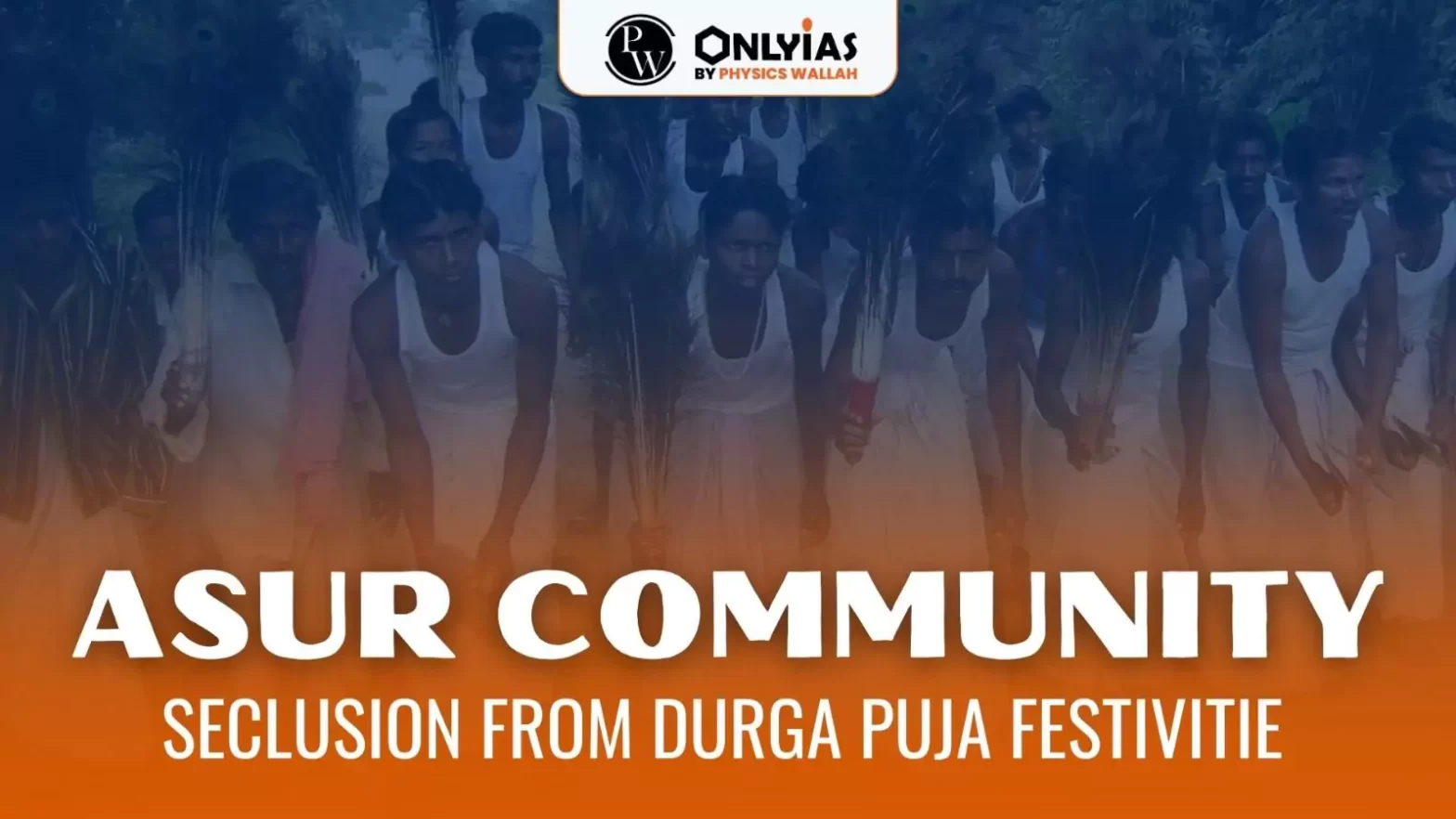Context: While most of West Bengal enthusiastically celebrates Durga Puja, the Asur community practices seclusion during this festival.


| Must Read | |
| NCERT Notes For UPSC | UPSC Daily Current Affairs |
| UPSC Blogs | UPSC Daily Editorials |
| Daily Current Affairs Quiz | Daily Main Answer Writing |
| UPSC Mains Previous Year Papers | UPSC Test Series 2024 |
The Asur community is a small ethnic group primarily living in Indian states like Jharkhand, West Bengal, Assam, Odisha, Meghalaya, and Chhattisgarh.
The Asurs were originally from the Indus Valley but were relocated to North Bengal by the British in the 19th century after working in tea plantations.
As of the 2011 census, the Asur population in India was around 33,000.
They speak the Asur language, belonging to the Munda family of Austro-asiatic languages.
The Asur people were officially recognized as a Scheduled Tribe in 2014.
PVTGs are the most vulnerable among tribal groups in India, characterized by factors like a small population, isolation, low literacy, and economic backwardness.
India recognizes 75 Particularly Vulnerable Tribal Groups (PVTGs) as of now.
The highest number of PVTGs is found in the state of Odisha.

<div class="new-fform">
</div>